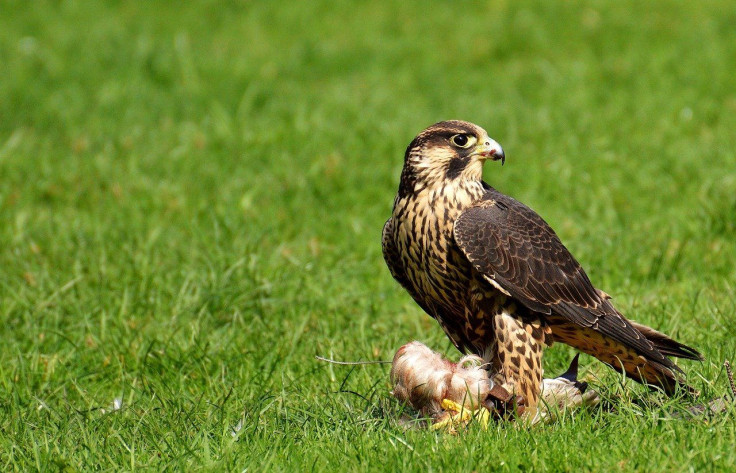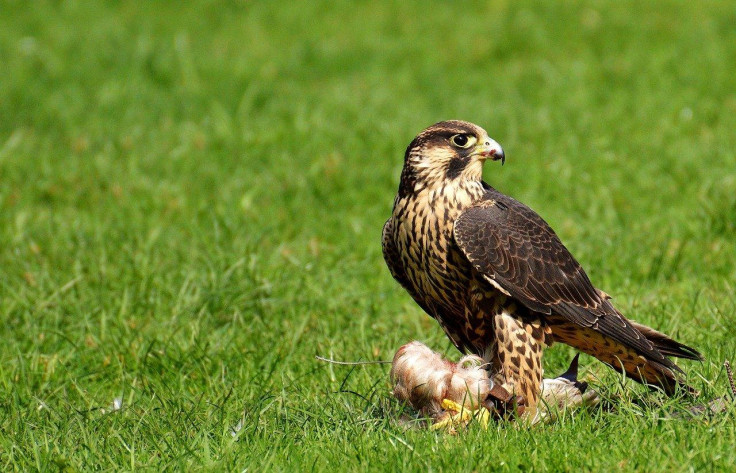Falcon Eyeliners? The Birds' 'Makeup' Helps Them Hunt, Study Finds

Many falcons have markings around their eyes that look like “dark eyeliners.” Now, a new study has suggested that the dark markings act as shields for these birds and help reduce the glare from sunlight when they hunt.
The study was published in the journal “Biology Letters,” and was conducted by researchers from the University of Cape Town (UCT) and the University of Witwatersrand, South Africa. In the research, experts found that the markings may actually differ depending on how sunny the bird’s habitat is, supporting a long-standing hypothesis on the markings' purpose from hunting.
Scientists have speculated that the distinct moustache-like markings under the peregrine falcon's eyes, called the malar stripe, may be helping them when they're going after fast prey. Now the new findings state that these markings have evolved according to the climate, meaning the sunnier the falcon's habitat, the bigger and darker are the “sun-shade” feathers.
This is rather like when athletes put dark markings under the eyes so they can spot fast-moving balls.
To test this "solar glare hypothesis," the researchers of the new study looked at more than 2,000 photos of peregrine falcons. They examined images of the birds from across their global range, scouring samples from 94 different regions.
"The peregrine falcon represents the ideal species to explore this long-standing hypothesis, because it has one of the most widespread distributions of all bird species, being present on every continent except Antarctica — it is therefore exposed to some of the brightest and some of the dullest areas around the globe," Arjun Amar, who supervised the study, the UCT said in a news release.
The researchers looked at factors such as the width and prominence of the malar stripes in individual falcons. They found that the malar stripes of peregrine falcons in regions with more sunlight were actually darker and larger, thus providing evidence for the solar glare hypothesis.
"We found that the size and prominence of the malar stripe were positively associated with average annual solar radiation, but not with other environmental variables, such as temperature and rainfall," the researchers wrote.
"Our results provide the first published evidence for the hypothesis that this plumage feature functions to reduce the amount of solar glare reflected into the falcon's eyes, thereby improving the ability to pinpoint and target agile prey in bright conditions."
The study also shows the important role that citizen science plays since many of the images were from online citizen science libraries. "We are grateful to all the photographers around the world that have deposited their photos onto websites," Amar said, as per the UCT news release. "Without their efforts this research would not have been possible," he added.

Photo: Pixabay






